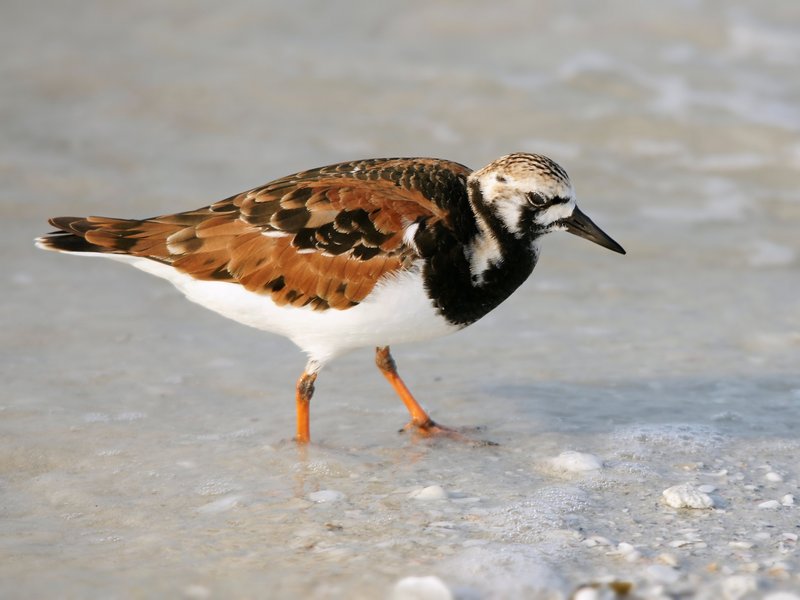|
| Query: plover | Result: 548th of 556 | |
ruddy turnstone (Arenaria interpres)
| Subject: | ruddy turnstone (Arenaria interpres)
| | Poster: | Wiki Photos (---@---.---)
| |

| Resolution: 3861x2895
File Size: 1103717 Bytes
Date: 2011:05:12 14:25:12
Camera: DSLR-A700 (SONY )
F number: f/6.3
Exposure: 1/500 sec
Focal Length: 4000/10
Upload Date: 2017:02:12 06:11:52
|
ERROR : Server Busy(-1105)
ERROR : Server Busy(-1105)
ruddy turnstone (Arenaria interpres)
Adult ruddy turnstone (Arenaria interpres) in breeding plumage
Description Arenaria interpres (Linnaeus, 1758)
Deutsch: Steinwälzer im Brutkleid auf der Insel Sanibel in Florida
English: Ruddy Turnstone in breeding plumage at Sanibel Island in Florida, U.S.A.
Date 12 May 2011
Photographer Hans Hillewaert
Source: https://commons.wikimedia.org/wiki/File:Arenaria_interpres_(habitus).jpg
The ruddy turnstone (Arenaria interpres) is a small wading bird, one of two species of turnstone in the genus Arenaria. The scientific name is from Latin. The genus name arenaria derives from arenarius, "inhabiting sand, from arena, "sand". The specific interpres means "messenger". It is now classified in the sandpiper family Scolopacidae but was formerly sometimes placed in the plover family Charadriidae. It is a highly migratory bird, breeding in northern parts of Eurasia and North America and flying south to winter on coastlines almost worldwide. It is the only species of turnstone in much of its range and is often known simply as turnstone. Order: Charadriiformes, Family: Scolopacidae, Genus: Arenaria, Species: Arenaria interpres (Linnaeus, 1758).
|
Comments |
|---|
| | Guest |
|
Ruddy Turnstone (Arenaria interpres)
French: Tournepierre à collier German: Steinwälzer Spanish: Vuelvepiedras común
Taxonomy: Tringa Interpres Linnaeus, 1758, Gotland, Sweden.
Subspecies and Distribution
A. i. interpres (Linnaeus, 1758) – Axel Heiberg I and Ellesmere I (N Canadian Arctic), Greenland, and N Eurasia to NW Alaska; winters on coasts of W Europe, Africa, S Asia, Australasia and Pacific islands, with some also on Pacific coast of America from California to at least Mexico.
A. i. morinella (Linnaeus, 1766) – NE Alaska and most of Arctic Canada; winters from South Carolina and Gulf of Mexico S to SC Chile and N Argentina. |
^o^
Animal Pictures Archive for smart phones
^o^
|
|
|

